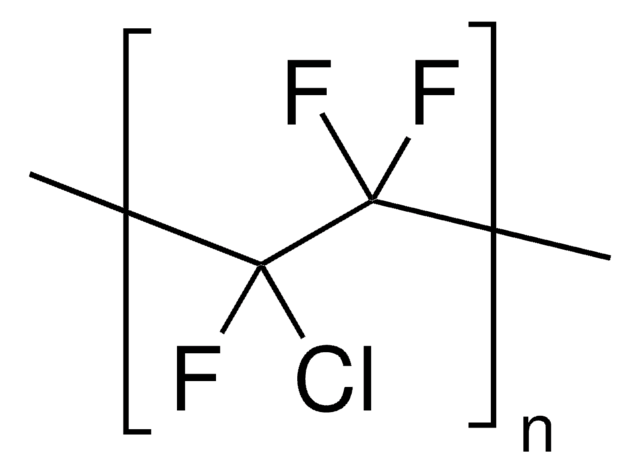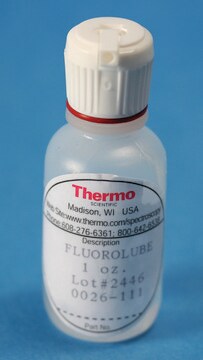454710
Poly(chlorotrifluoroethylene)
powder
About This Item
Produits recommandés
Forme
powder
Constante diélectrique
2.6, 1 kHz (ASTM D 150)
Dureté
75-85 (Shore D)
Paramètres
2E-3 cc/sec flow rate (230°C 100 MPa)
Température de transition
Tg (DSC) 103 °C (onset)
Tm (DSC) 210 °C (onset)
Densité
1 g/mL at 25 °C
Chaîne SMILES
F\C(F)=C(/F)Cl
InChI
1S/C2ClF3/c3-1(4)2(5)6
Clé InChI
UUAGAQFQZIEFAH-UHFFFAOYSA-N
Vous recherchez des produits similaires ? Visite Guide de comparaison des produits
Application
Caractéristiques et avantages
Code de la classe de stockage
11 - Combustible Solids
Classe de danger pour l'eau (WGK)
WGK 3
Point d'éclair (°F)
Not applicable
Point d'éclair (°C)
Not applicable
Faites votre choix parmi les versions les plus récentes :
Certificats d'analyse (COA)
Vous ne trouvez pas la bonne version ?
Si vous avez besoin d'une version particulière, vous pouvez rechercher un certificat spécifique par le numéro de lot.
Déjà en possession de ce produit ?
Retrouvez la documentation relative aux produits que vous avez récemment achetés dans la Bibliothèque de documents.
Notre équipe de scientifiques dispose d'une expérience dans tous les secteurs de la recherche, notamment en sciences de la vie, science des matériaux, synthèse chimique, chromatographie, analyse et dans de nombreux autres domaines..
Contacter notre Service technique







